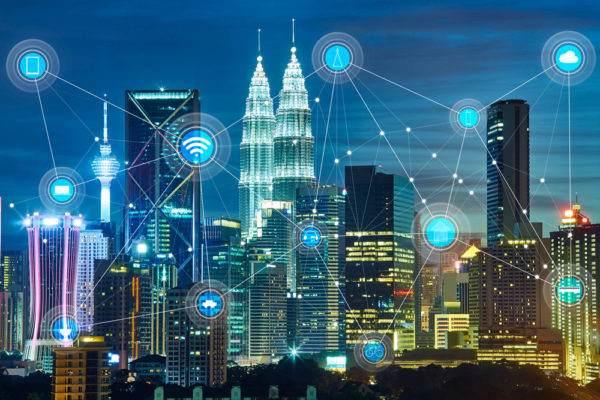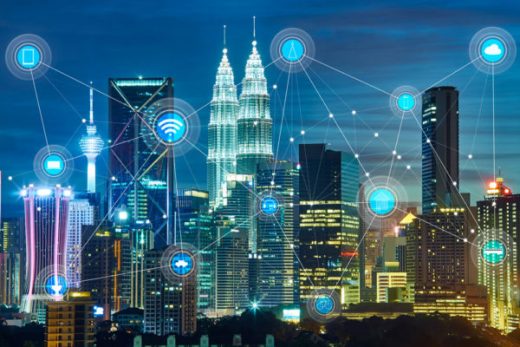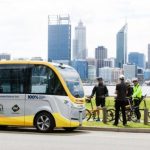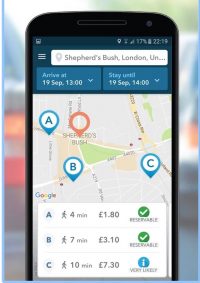3 benefits a smart city can gain from smart infrastructure
3 benefits a smart city can gain from smart infrastructure

The Internet of Things is sweeping across the globe at breakneck speeds, and before we know it, our entire lives will be facilitated by connected technology.
We’re already seeing the IoT make an incredible impact on how the industrial world operates, and we’re seeing it seep into household goods to bring convenience and efficiency to consumers’ lives.
However, one less-explored (but fast-growing) area where connected technology is poised to make a big splash lies in the public sector: Specifically, how municipalities incorporate smart technology into their environments to save money, enhance the lives of their constituents, and entice the best and brightest businesses to set up shop within their borders.
Living in a Smart City
Imagine using a digital voice assistant like Siri to buy tickets for a big concert. Then, as your autonomous vehicle chauffeurs you to the venue, the streetlights lining the road form a cocoon around you, turning on as you approach and turning off soon after you pass. City-sponsored drones zip around overhead, looking out for any traffic bottlenecks that might impact your journey.
Then, when you pull up to the municipal garage outside the arena, a kiosk tells you exactly where the nearest vacant parking spot is, making the experience a stress-free breeze.
This is just a small sampling of what life will be like in a smart city. But even in this simple example, several key details went into creating the smooth experience. Among them: The streetlights must respond to the presence of a vehicle, the drones flying overhead must know how to identify and report traffic patterns, the municipal parking lot must be able to track each spot’s occupancy, and so forth.
Coordination is key
Too often, city departments dive headfirst into the realm of connected technology without coordinating their efforts. For example, the utilities department will deploy one network for its smart meters, while the department of transportation uses a different one for its energy-efficient streetlights. Ultimately, this results in a variety of compatibility issues that leave cities with headaches and high costs.
On top of that, with this uncoordinated approach, key day-to-day data ends up siloed off within departments. This makes it difficult for city leaders to fully capitalize on the treasure trove of insights made possible by the IoT. Unnecessary resources must be devoted to connect this siloed information, which results in a slower analysis process and could lead to accuracy issues.
Also, due to the fact that network longevity concerns have plagued the IoT throughout its existence, a city utilizing more networks than necessary is only making things more difficult (and costly) for itself once the next sunset comes around. Therefore, city departments must work in tandem when deploying IoT technologies, keep network longevity in mind, and strive to keep things as streamlined as possible.
The perks of a cohesive Smart City
When properly built, smart cities reap countless benefits that include:
1. Sustainability. Cities that embrace IoT technology can optimize their use of resources, including water, fuel, energy, and even waste. The city of Los Angeles, for example, installed LED bulbs in its streetlights and successfully cut its energy use by 60 percent. The Dutch city of Eindhoven took things even further by installing streetlights similar to the ones I described earlier — they turn on and off depending on how busy the street is.
Aside from saving the environment, smart cities save big bucks thanks to their IoT initiatives. Los Angeles’ LED bulbs save the city $ 8 million per year, and the city of Barcelona saved more than 75 million euros in 2014 by adopting IoT-driven smart water, lighting, and more.
2. Community. A city that illustrates a commitment to improvement through smart initiatives is more likely to build strong, well-informed, and healthy communities.
For example, by creating an autonomous smart bus network and offering free citywide Wi-Fi, Barcelona has effectively encouraged its residents to drive less, walk more, and get out and explore the area. As a result, pollution levels have decreased, obesity rates have dropped, and residents feel engaged with their hometown.
In America, Atlantic City, N.J., is embracing smart technology by installing LED streetlights that feature charging stations and display screens that keep citizens informed of current events and emergency announcements.
3. Growth. Smart cities don’t just save municipalities money and improve the lives of current residents; they also attract new residents. Who wouldn’t want to live and work in a city with great air quality, low utility costs, reliable public transit, and free-flowing Wi-Fi?
Businesses in particular flock to cities that take care of their smart infrastructure because it lowers operating costs. One study predicts the global business community will spend more than $ 18 billion incorporating smart technology into buildings in 2017 — which far surpasses the $ 5.5 billion it spent back in 2012.
The energy savings in smart buildings make the move worthwhile, typically paying for itself on an enterprise level within a year or two. Smart windows alone can save up to 26 percent on cooling and 67 percent on lighting costs.
In order for a smart city to truly bring its IoT-driven features to life and see long-term value in its investment, it must create a cohesive and holistic smart infrastructure. Every department must be involved and understand how IoT-driven solutions can benefit them, and they must work together to create a seamless, streamlined experience that optimizes life for its current (and future) residents.
When smart cities operate in harmony, their citizens, industries, and environments all thrive.
John Horn joined Ingenu after serving as president of RacoWireless, a leading provider of machine-to-machine (M2M) connectivity solutions. He led the company to record growth and multiple awards for its accomplishments, including recognition as the “Most Innovative Company” and “Entrepreneurial Company of the Year.” Before joining RacoWireless, Horn was a leader at T-Mobile for more than nine years.
The post 3 benefits a smart city can gain from smart infrastructure appeared first on ReadWrite.
(41)













